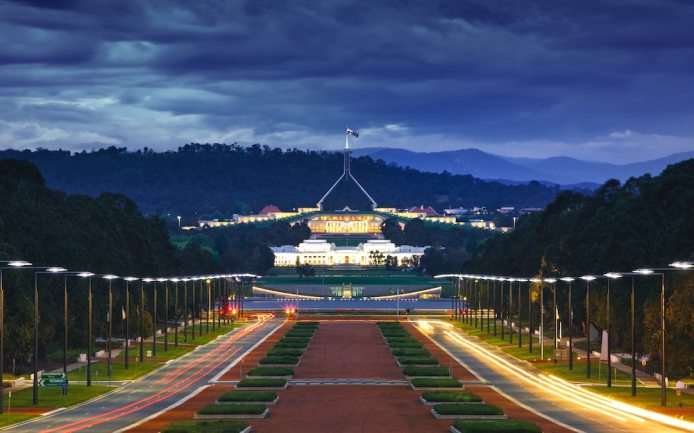
UPDATED 29/10/2020: With Australia now passing six months of COVID-19 restrictions, event guidelines have continued to change on a regular basis.
Each state and territory follows its own guidelines in regards to business events, some moving ahead at a much faster pace than others.
Here, we’ve rounded up the most up-to-date guidelines and restrictions for business events across Australia.
New South Wales
Currently in New South Wales, business events are capped at 300 people and must adhere to the ‘one person per four square metres’ rule.
Corporate functions of up to 300 people can now be held at any appropriate premises, including at restaurants, subject to a COVID-Safe plan. Previously these were limited to just function centres.
“Function centres will now be able to host up to whichever is the lesser of 300 people or one person per four square metres for a corporate event,” said Minister for Jobs, Investment, Tourism and Western Sydney Stuart Ayres.
Entertainment facilities including theatres, cinemas and concert halls can now host ticketed, seated events at 50 per cent of capacity, to a maximum of 1,000 people.
The latest information is available here.
ACT
The ACT has entered Step 3.2 of its recovery plan and recently released its new COVID Safe Event Protocol.
Events of up to 200 people are currently allowed to go ahead, while large indoor seated venues, including the National Convention Centre Canberra, can operate at 50 per cent capacity, up to 1,000 people.
Event organisers can apply for an exemption to hold a medium-risk event up to 500 people or a high-risk event of 500 to 5,000 people.
Stay up to date here.
Queensland
Queensland’s chief health officer has approved the Industry Framework for COVID Safe Events, which facilitates the resumption of events held by businesses in Queensland under Stage 3 of its roadmap.
Under the framework, events must be hosted in accordance with the following conditions:
- Events up to 500 people can proceed by following COVID Safe Event Checklist.
- Events with 500 to 10,000 people must develop a COVID Safe Event Plan and submit for approval by the local Public Health Unit.
- Events of more than 10,000 people must develop a COVID Safe Event Plan and submit for approval by the Queensland chief health officer.
From 1 October, Queensland increased the maximum number of attendees permitted at outdoor events with a COVID Safe Events Checklist from 500 to 1,000.
The state also increased the seated capacity of outdoor stadiums from up to 50% to up to 75% with a COVID Safe Plan.
All the latest information is available here.
Victoria
While events are still not permitted, from 18 October, small changes were made to restrictions in both metropolitan Melbourne and regional Victoria as part of the state’s reopening framework.
People in metropolitan Melbourne can now meeting in a group of up to ten people from a maximum of two households outdoors in a public place to socialise.
In regional Victoria, restaurants and cafes can have up to 70 people outdoors and up to 10 people per indoor space with a maximum of 40 people per venue indoors
More information is available here.
South Australia
In South Australia, the limit on business events is determined by the one person per two square metres rule.
Public events for fewer than 1,000 patrons require a COVIDSafe Plan, while an approved COVID Management Plan is required for larger, high-risk events of more than 1,000 guests.
Stay up to date with South Australia’s guidelines here.
Tasmania
Under Stage 3 restrictions, the number of people permitted to gather in Tasmania is now determined by the density of the area, up to a maximum of 250 people for an undivided space in an indoor premises and 1,000 people in an undivided space outdoors.
The maximum density limit is one person per two square metres.
Meanwhile, the Tasmania Government is developing a framework to restart large-scale COVID-safe events from 1 December 2020.
The framework will allow organisers to apply for events that exceed current gathering limits, with events categorised into three levels. Under the framework, events of up to 10,000 people may be allowed to go ahead.
More information can be found here.
Northern Territory
In the Northern Territory, events with less than 100 people do not require completion of a checklist or safety plan, however the physical distancing and hygiene principles should still be considered and implemented.
Events and public gatherings of 100 to 500 people must complete a COVID-19 safety checklist prior to the event to demonstrate the commitment to the key safety principles.
Major events and public gatherings of more than 500 people must also submit a safety plan and will require formal approval from the Northern Territory chief health officer before being allowed to commence.
The latest information can be found here.
Western Australia
Western Australia’s gathering limits are now only determined by the one person per two square metre rule, while major sport and entertainment venues can operate at 50 per cent capacity.
Events with more than 500 patrons that require local government authority approval will need an approved COVID Event Plan as part of that process.
Starting from 24 October, selected venues that predominantly hold seated events are exempt from the two square metre rule and may operate at 60 per cent capacity for seated performances.
Stay up to date here.
